In the annals of automotive history, prototypes and concepts often shine as beacons of innovation, even if they never see the production line. The Saab Catherina, born in 1964, stands as a fascinating example of a visionary’s dreams turned into reality – if only in prototype form. This striking red sports car, with a distinctive targa top, was the brainchild of Sixten Sason, a renowned Swedish designer whose creative genius left an indelible mark on the Saab brand.
The Saab Catherina is a remarkable 1964 prototype automobile, born from the creative vision of Sixten Sason and brought to life at the renowned Aktiebolaget Svenska Järnvägsverkstäderna (ASJ) workshops in Katrineholm, Sweden.
This striking red two-seat sports car is defined by its unique targa top, setting it apart as a piece of automotive history. Sason’s ingenuity and Saab’s commitment to innovation shine through in the creation of the Catherina, which continues to capture the imagination of enthusiasts and collectors around the world.
Table of Contents
A Passion Project with Saab’s Attention
Sixten Sason had already established himself as a freelance designer when he began envisioning the Catherina. His early drawings depicted a compact sports coupé in the early 1960s, just as Saab was considering the addition of a sports car to its lineup. Recognizing Sason’s talent, Saab commissioned him to transform his design into a production-ready reality, marking the start of an exciting journey.
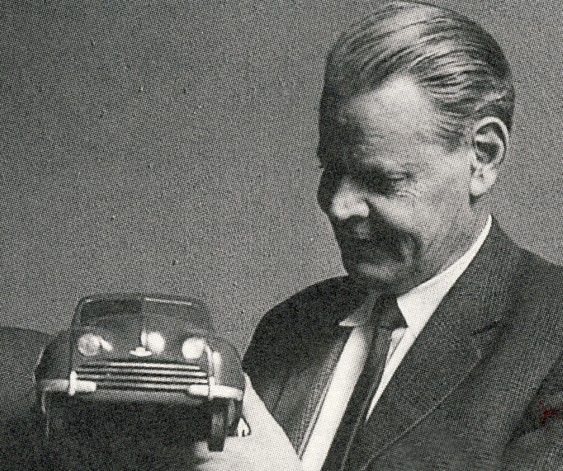
Saab’s quest for a compact and lightweight sports car was spurred by the demands of the US market. The company’s management was keen to tap into this market segment, and in 1963, they turned to their in-house designer, Sixten Sason, to spearhead the development of a prototype that could potentially go into series production at the ASJ facilities in Katrineholm. However, this endeavor was not without its challenges, as strict cost management was a crucial aspect of the project’s specifications.
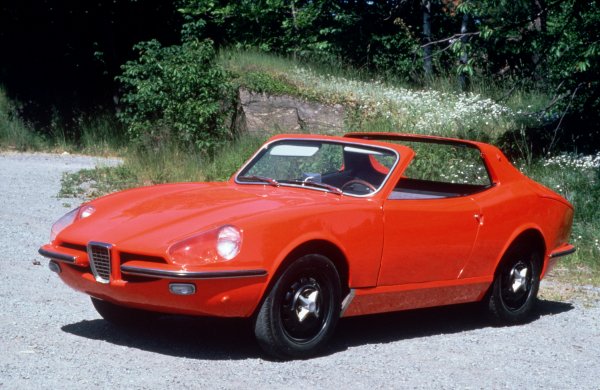
From Vision to Prototype
The process of bringing the Catherina to life commenced in January 1963, with the assembly of a prototype taking place at the Aktiebolaget Svenska Järnvägsverkstäderna (ASJ) workshops in Katrineholm, Sweden. The car’s name drew inspiration from its birthplace.
Sason, a designer renowned for his creative flair, encountered resistance when it came to adhering to these stringent specifications for the proposed Sonett II. At the same time, Sason was concurrently working on the Saab 99, where his innovative ideas were already shaping Saab’s design DNA. While Sason envisioned a large, curved windscreen for the sports car project, reminiscent of Saab 99 and Saab 900 designs, he was compelled to use the Saab 96’s straight and modest windscreen, as well as that model’s underbody.
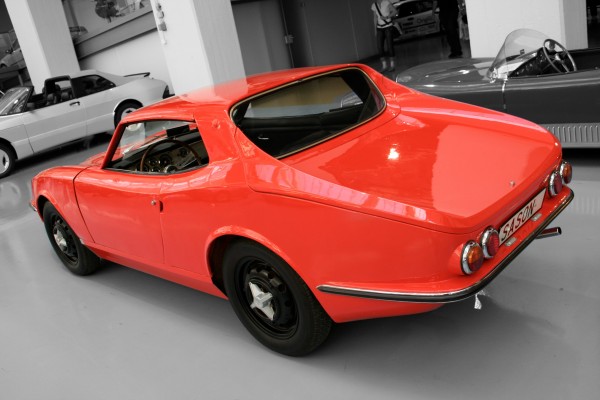
Nevertheless, the constraints of the project did not deter Sason’s creativity. The specifications mandated a solid roll bar, and this requirement logically led Sason to devise a sports car with a distinctive targa roof. This targa concept was innovative and innovative, predating Porsche’s Targa idea introduced in September 1965. As Sason pushed the boundaries of design and creativity, the work on the Sonett II prototype continued to progress, culminating in the creation of a full-scale 1:1 model by the autumn of 1964.
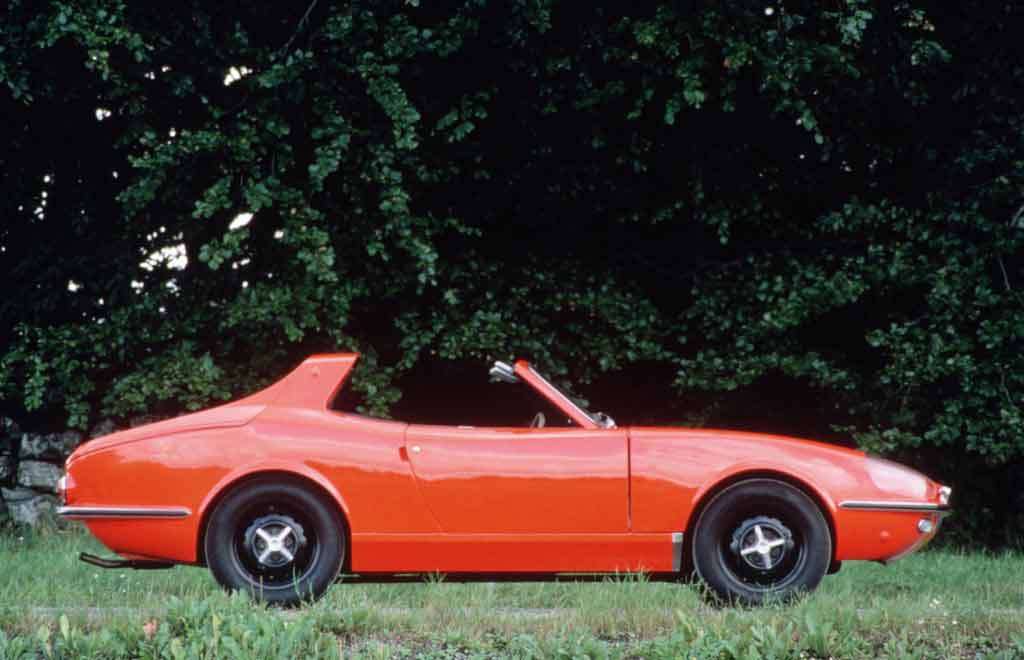
The world got its first glimpse of the Saab Catherina on April 24, 1965, at the Linköping Sports Centre. The prototype was met with enthusiasm and intrigue, largely due to its forward-thinking design features.
Innovations Ahead of Their Time
The Catherina was more than just a pretty face. It introduced features that were well ahead of their time. Notably, it boasted a targa top that could be neatly stowed in the car’s trunk, a concept that would later become synonymous with the 1966 Porsche 911 Targa. Another visionary concept that Sason envisioned but didn’t include in the prototype was roof-mounted headlamps for extended visibility on dipped beams.
A Glimpse into Saab’s Future
A striking resemblance existed between the Catherina and the upcoming Saab 99. This should come as no surprise since both designs found their origins on Sixten Sason’s drawing board. The Catherina’s influence on the design direction of future Saab models is undeniable.
Testing and a New Direction
As test drives of the Catherina unfolded, it became evident that more development was necessary before the car could enter production. At the same time, a competitor emerged in the form of the MFI13. The MFI13, conceived by Björn Karlström and Björn Andreasson and manufactured by Malmö Flygindustri (MFI), entered the scene and soon drew Saab’s attention.
The Birth of the Saab Sonett II
After thorough evaluation, Saab chose the MFI13 as the basis for its new sports car, the Saab Sonett II. The MFI13 prototype featured a remarkable three-cylinder two-stroke engine equipped with three carburetors. This powerhouse achieved a top speed of 150km/h and accelerated from 0 to 100km/h in just 13.7 seconds. The Catherina’s role in Saab’s sports car history was about to change.
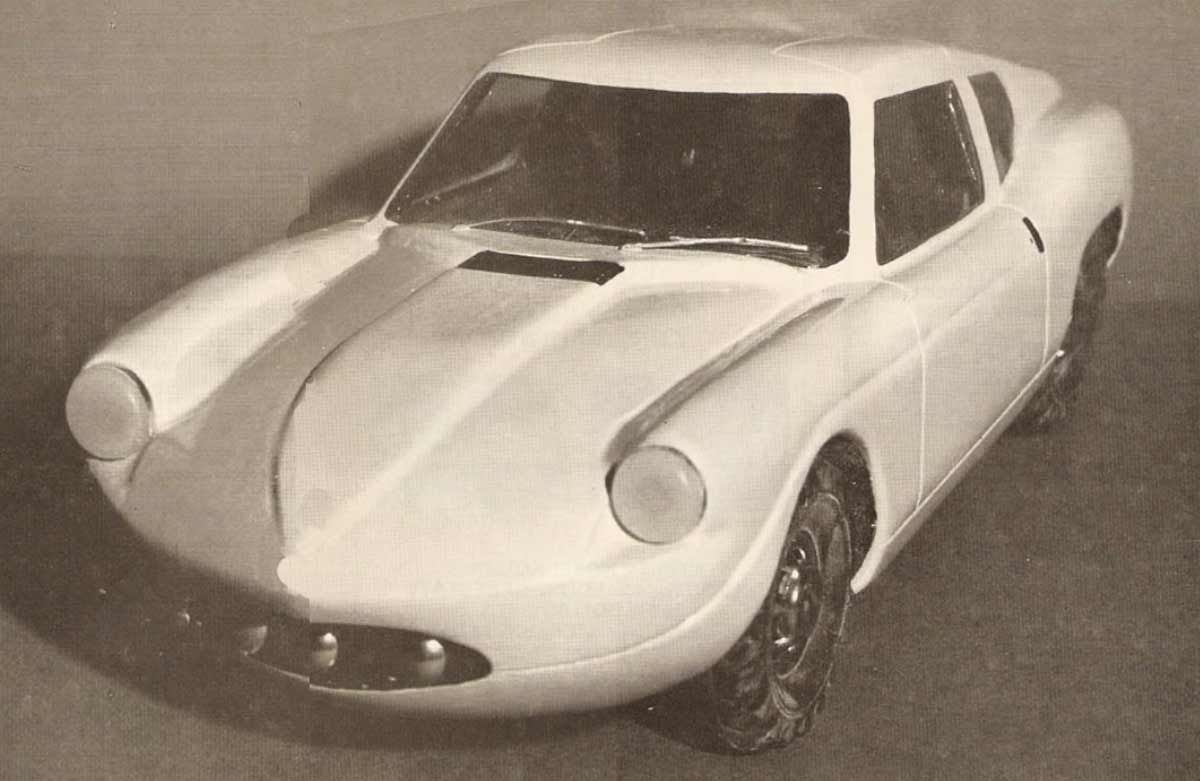
The inception of the MFI sports car project can be traced back to the ingenious mind of Björn Karlström, who envisioned a compact two-seater sports car with a mid-mounted engine. Drawing inspiration from the resourceful Saab parts inventory, Karlström incorporated numerous standard Saab components into the design, not only for their availability but also their cost-effectiveness. Rolf Mellde, an engineer at Saab and a passionate car enthusiast, was introduced to Karlström’s exciting proposal. Mellde was naturally intrigued by the idea of a new Swedish sports car, but he recognized the practical challenges. Saab was heavily committed to producing family cars, leaving little time and funding for an exotic project like a sports car. Consequently, at that time, the concept remained in a preliminary stage without significant progress.
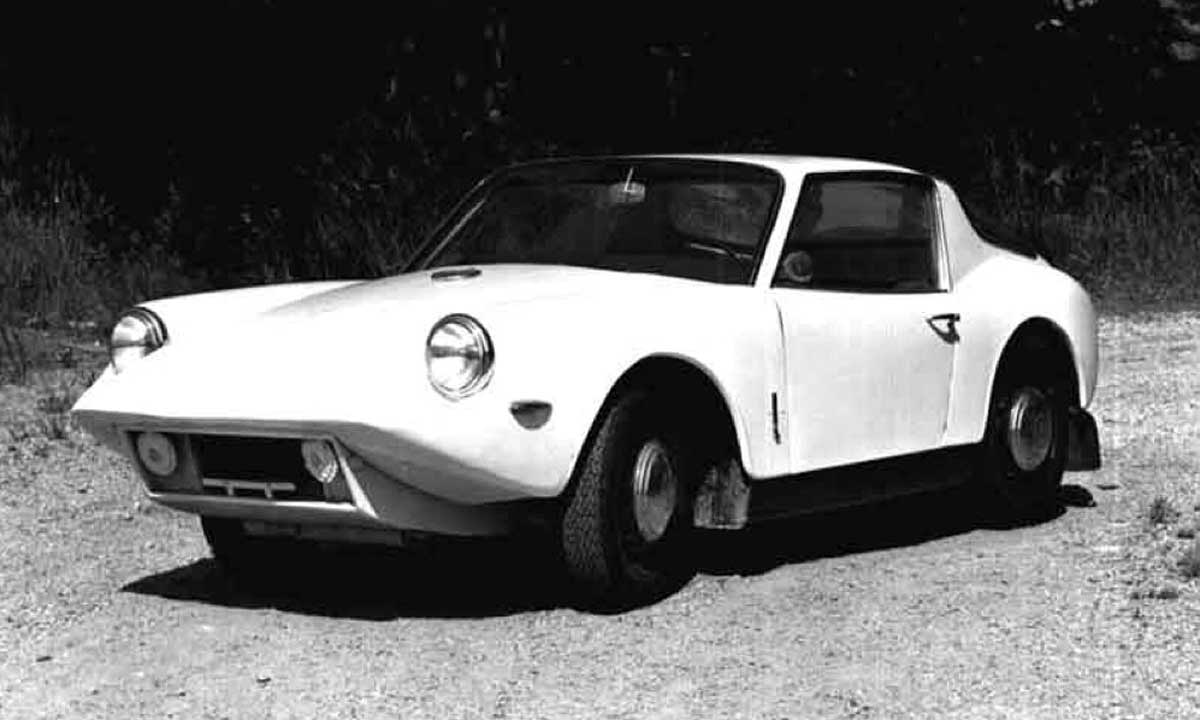
As the sports car project gained momentum, it acquired its designation – MFI 13, where MFI abbreviates the company’s name and 13 serves as the project number. The choice of “13” might seem superstitious to some, considering the avoidance of this number in aircraft production due to prevailing pilot beliefs. However, it turned out that sports car enthusiasts were more open-minded, allowing the project to bear the fortunate number.
The Legacy of the Catherina
With the path to production no longer open, the Catherina took its place on display in the Saab Car Museum in Trollhättan. Though it never reached the hands of eager customers, its design cues continued to shape the future of the Saab brand.
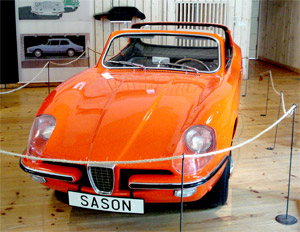
Catherina or Catharina: The Name Controversy
An intriguing point of contention in the Catherina’s history revolves around its name. While it is widely known as Catherina, archival documents from ASJ suggest that Sixten Sason originally proposed the name Catharina.
The debate about the name persists, with the original name badge on the dashboard, reinstated in 2008 at the Saab museum, reading “Catharina.”
A Missed Opportunity
The Saab Catherina represents more than just a missed opportunity; it symbolizes the road not taken in Saab’s sports car journey. With its innovative features and distinctive design, it had the potential to make a lasting impact. Much like the iconic Porsche Targa, the Catherina could have become a classic over time. Instead, it remains a hidden gem, a footnote in automotive history.
The Saab Catherina stands as a testament to the creative genius of Sixten Sason and the ever-evolving landscape of automotive design. Although it never reached production, its impact on Saab’s design language and the automotive world as a whole is undeniable. The legacy of the Catherina endures, reminding us of the pioneering spirit that drives the industry forward.











